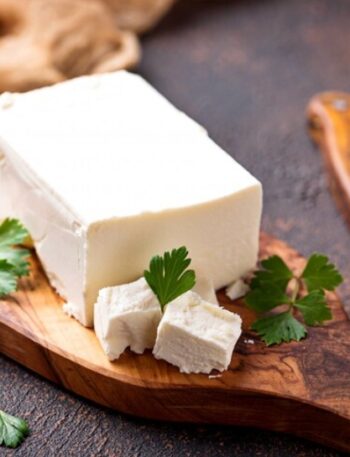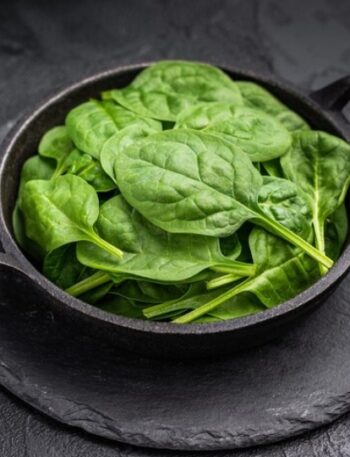A Vibrant Root Vegetable- Beetroot, often simply called beet, is a striking root vegetable known for its deep red-purple color, earthy flavor, and versatility in culinary traditions around the world. Beyond its bold appearance, beetroot carries a fascinating history, intriguing cultivation practices, diverse varieties, and significant cultural impact. This introduction explores beetroot’s origins, agricultural development, botanical characteristics, culinary uses, and its role in various cultures throughout history.
Origins and Historical Background
The beetroot’s story begins thousands of years ago, with its wild ancestor, Beta vulgaris—a plant native to the Mediterranean basin. Unlike the beetroot we consume today, the wild forms were primarily grown for their leafy greens rather than their roots. It wasn’t until ancient civilizations began selectively cultivating beets that the swollen, sweet root developed into the familiar vegetable we recognize now.
Historical records suggest that the ancient Egyptians, Greeks, and Romans valued beets, although initially, the emphasis was more on the leaves and medicinal properties rather than the root itself. Roman writers documented the use of beet leaves as a food source and praised the root for its supposed healing qualities.
The domestication and widespread consumption of beetroot roots gained momentum during the Middle Ages in Europe. By the Renaissance, beetroot was a common feature in European gardens and kitchens, appreciated for its unique color and flavor. The vegetable gradually spread throughout the world, accompanying explorers and traders during periods of global expansion.
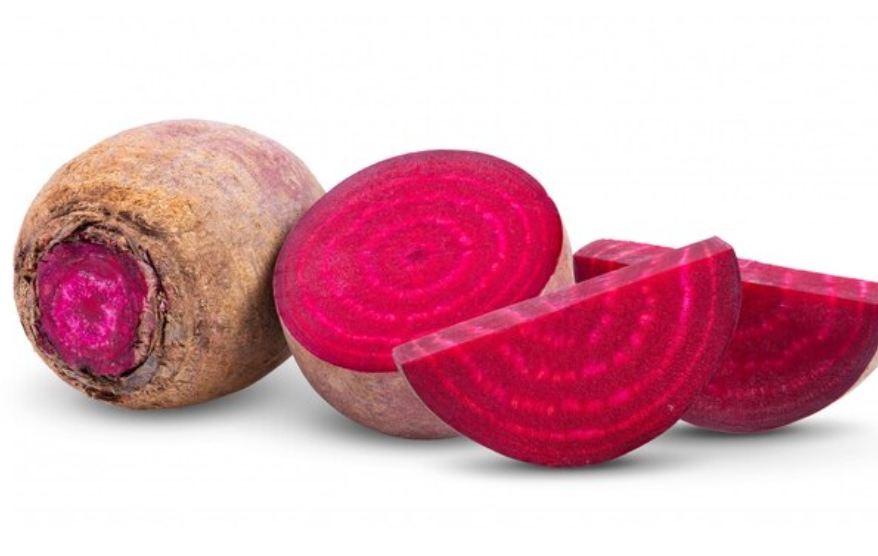
Botanical Characteristics and Cultivation
Beetroot belongs to the species Beta vulgaris in the Amaranthaceae family, which also includes Swiss chard and spinach. It is a biennial plant, meaning it typically completes its life cycle over two years. In the first year, it produces a thick, fleshy taproot—the beetroot itself—and leafy greens, while in the second year, if left to mature, it flowers and produces seeds.
The root varies in size, shape, and color depending on the variety, but typically it is round or oval with a smooth, shiny skin. The flesh can range from deep red to golden yellow, striped, or even white, each variety bringing its own subtle flavor nuances. The beetroot leaves are broad, with visible veins and often tinged with red or purple hues, and are edible as well.
Beetroot prefers cool, temperate climates and grows best in well-drained, loamy soils rich in organic matter. It thrives in full sun but can tolerate partial shade. The planting season usually starts in early spring for a summer harvest or in late summer for a fall harvest, depending on the climate zone.
Growing beetroot requires patience, as the root takes between 50 and 70 days to mature. It is typically grown from seed sown directly into the soil, with thinning of seedlings necessary to ensure adequate space for root development. Beetroot is moderately drought-tolerant but performs best with consistent watering.
Varieties of Beetroot
Several beetroot varieties have been developed over time, each differing in size, color, shape, and culinary characteristics. Some of the most popular include:
- Detroit Dark Red: One of the most widely grown beet varieties, it features a deep red color, smooth texture, and sweet, earthy flavor. It is favored for both fresh eating and cooking.
- Golden Beet: This variety is bright yellow or golden in color and offers a milder, less earthy taste compared to red beets. Its vibrant color adds visual interest to dishes.
- Chioggia (Candy Stripe): Recognizable for its striking concentric rings of red and white inside the root, Chioggia beets are sweeter and less earthy, making them popular for raw preparations and salads.
- White Beet: These beets have a creamy white flesh and are even milder in flavor. They do not bleed their color when cooked, making them ideal for mixed dishes where color contrast is desired.
- Cylindra: Known for its elongated, cylindrical shape, this variety produces uniform roots that are easy to slice and ideal for roasting or pickling.
These varieties allow cooks and growers to select beets based on flavor preference, color presentation, and intended culinary use.
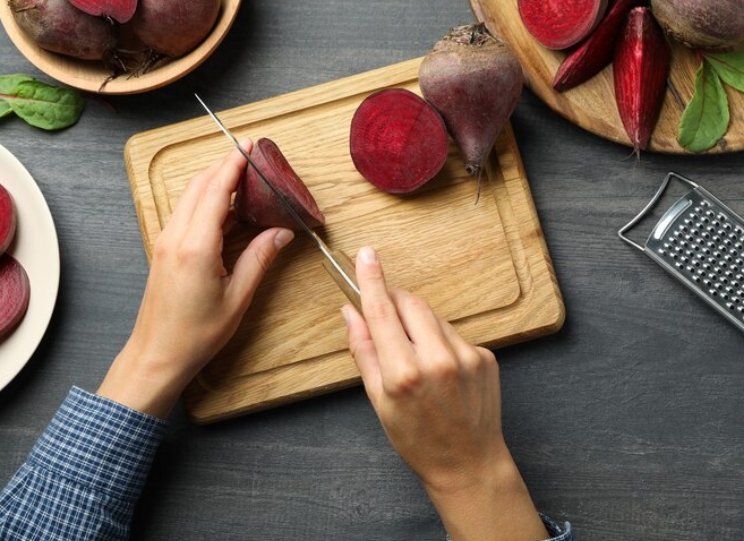
Culinary Uses and Preparation
Beetroot’s rich flavor and vibrant color have made it a staple in numerous culinary traditions worldwide. Its earthy sweetness, combined with a firm yet tender texture when cooked, allows it to shine in a wide variety of dishes.
- Raw: Beetroot can be enjoyed raw, thinly sliced or grated into salads and slaws. Raw beets have a crunchy texture and a mildly sweet, earthy flavor. They pair well with citrus, nuts, and tangy cheeses like goat cheese or feta.
- Boiled or Steamed: Cooking beetroot by boiling or steaming softens the root and intensifies its sweetness. It is important to cook beets gently to avoid flavor loss or excessive softness. Once cooked, beets can be peeled easily and used in salads, sides, or purees.
- Roasted: Roasting is one of the most popular cooking methods for beetroot, as it brings out caramelized notes and deepens the natural sweetness. Roasted beetroot can be served warm or cold, often paired with herbs, balsamic vinegar, or other root vegetables.
- Pickled: Pickled beetroot is a traditional preparation in many cultures, particularly in Eastern Europe. The pickling process enhances the beet’s tangy flavor and extends its shelf life, making it a popular condiment or side dish.
- Soups and Stews: Beetroot is famously used in Eastern European borscht, a hearty beet soup that highlights its vibrant color and flavor. The root’s ability to absorb and complement other ingredients makes it a versatile addition to various soups and stews.
- Juicing and Smoothies: In recent years, beetroot juice has gained popularity for its vivid color and distinctive flavor. It is often blended with other fruits and vegetables to make nutrient-rich smoothies and beverages.
Beyond the root, beet greens are edible and nutritious, commonly sautéed, steamed, or added to soups and salads. Their flavor is similar to Swiss chard, mild and slightly bitter.
Cultural Significance and Global Influence
Beetroot holds cultural importance in many regions of the world, often tied to traditional cuisines and folk practices. In Eastern Europe and Russia, beetroot is a dietary staple and is closely associated with traditional dishes like borscht and beet salad. It is celebrated for its warming qualities during cold winters and its role in seasonal festivities.
In Mediterranean countries, beetroot has long been incorporated into fresh salads and side dishes, appreciated for its color and flavor contrast. It also features in Middle Eastern and North African cuisines, where it’s combined with spices and herbs for distinctive preparations.
In recent decades, beetroot has gained international attention as a “superfood” for its nutritional properties and versatility, entering mainstream Western culinary culture. It is commonly featured in farm-to-table restaurants, juice bars, and health-conscious recipes worldwide.
Beetroot’s vibrant color has also inspired artistic and cultural symbolism. Historically, the beet’s red pigment was used as a natural dye for fabrics and food. In folklore, beetroot was sometimes believed to possess mystical properties, linked to vitality and protection.
Economic and Agricultural Importance
Beetroot cultivation is an important agricultural activity in many countries, both for fresh consumption and for processing. Beyond the vegetable itself, the species Beta vulgaris includes sugar beet, a major crop grown for sugar production globally. While table beetroot and sugar beet are distinct varieties, they share genetic ties and cultivation techniques.
Farmers appreciate beetroot for its relatively low maintenance requirements and adaptability to different soils and climates. The vegetable’s growing popularity in various cuisines has increased demand, supporting a diverse market from small-scale organic farms to large commercial producers.
The ability to store beetroot for extended periods—especially when harvested late in the season and kept in cool, moist conditions—adds to its value as a winter vegetable, helping stabilize food supplies during colder months.
Conclusion
Beetroot is much more than a colorful root vegetable. Its long history, unique botanical features, diverse varieties, and rich culinary traditions make it a fascinating plant with enduring appeal. From ancient Mediterranean fields to modern kitchens around the world, beetroot continues to captivate people with its earthy sweetness, bold color, and adaptability.
As global culinary trends embrace natural, seasonal, and plant-based foods, beetroot’s versatility and cultural resonance ensure it remains a beloved ingredient. Whether roasted, pickled, juiced, or eaten raw, beetroot offers an extraordinary combination of flavor, texture, and visual impact, making it a truly remarkable vegetable with a story as vibrant as its hue.
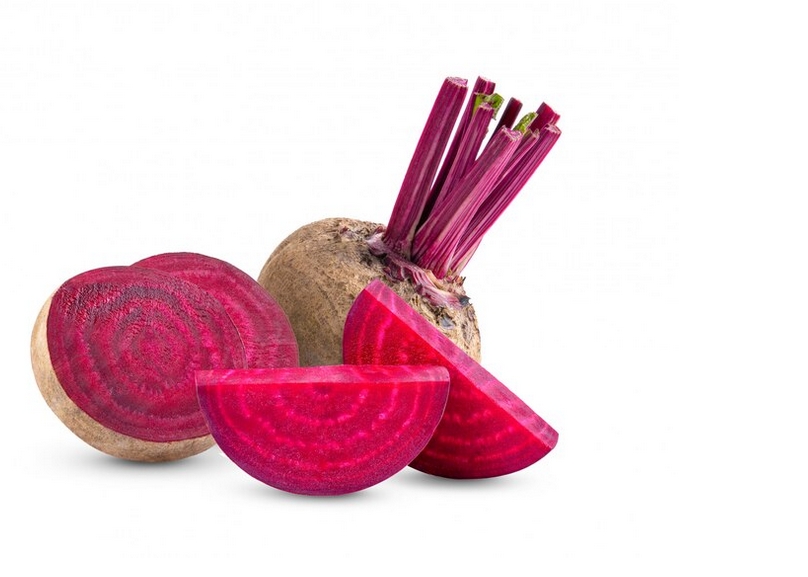
Health Benefits Of Beetroot Explained
1. Supports Cardiovascular Health
Beetroot is rich in nitrates, which the body converts into nitric oxide—a compound that helps relax and dilate blood vessels. This process improves blood flow and lowers blood pressure, reducing the risk of hypertension and other cardiovascular diseases. Regular consumption of beetroot has been linked to improved heart health and better circulation.
2. Enhances Athletic Performance
The nitrates in beetroot also enhance exercise performance by improving oxygen efficiency during physical activity. Studies have shown that drinking beetroot juice can increase stamina and reduce fatigue, allowing athletes and fitness enthusiasts to train harder and longer. This makes beetroot a popular natural supplement for boosting endurance.
3. Supports Liver Health
Beetroot contains compounds like betaine, which help support liver function by aiding in detoxification and reducing fat buildup. Betaine also promotes the production of enzymes that assist the liver in processing toxins, making beetroot a valuable food for maintaining liver health and overall detoxification.
4. Rich in Antioxidants
Beetroot is a potent source of antioxidants, including betalains, which give it its distinctive deep red color. These antioxidants help neutralize harmful free radicals in the body, reducing oxidative stress and inflammation. This protective effect can lower the risk of chronic diseases such as cancer and neurodegenerative conditions.
5. Promotes Digestive Health
Beetroot is high in dietary fiber, which is essential for healthy digestion. Fiber adds bulk to stool, helping to prevent constipation and promote regular bowel movements. Additionally, fiber supports a healthy gut microbiome, which is crucial for overall digestive health and immune function.
6. Supports Brain Health
The nitrates found in beetroot improve blood flow not only to muscles but also to the brain. Enhanced cerebral blood flow can improve cognitive function, including memory, focus, and mental clarity. Some research suggests that beetroot consumption may help slow cognitive decline as people age.
7. Helps Manage Inflammation
Chronic inflammation is linked to many diseases, and beetroot’s betalains have anti-inflammatory properties that help combat inflammation in the body. By reducing inflammatory markers, beetroot may contribute to the prevention of conditions like arthritis, heart disease, and metabolic syndrome.
8. Aids in Weight Management
Low in calories but rich in fiber and nutrients, beetroot can be a helpful addition to a weight management plan. Its fiber content promotes satiety, helping you feel fuller longer and potentially reducing overall calorie intake. Additionally, its natural sweetness can satisfy sugar cravings in a healthier way.
9. Supports Healthy Skin
Beetroot’s antioxidants and vitamin C content contribute to healthy, glowing skin by protecting against damage from free radicals and promoting collagen production. Collagen is essential for skin elasticity and firmness. Regular consumption of beetroot may help maintain youthful skin and reduce signs of aging.
10. Helps Regulate Blood Sugar Levels
Beetroot has a moderate glycemic index and contains fiber, both of which help regulate blood sugar levels. The fiber slows the absorption of sugars into the bloodstream, preventing rapid spikes and crashes. This makes beetroot a suitable food for those managing diabetes or looking to maintain steady energy levels.
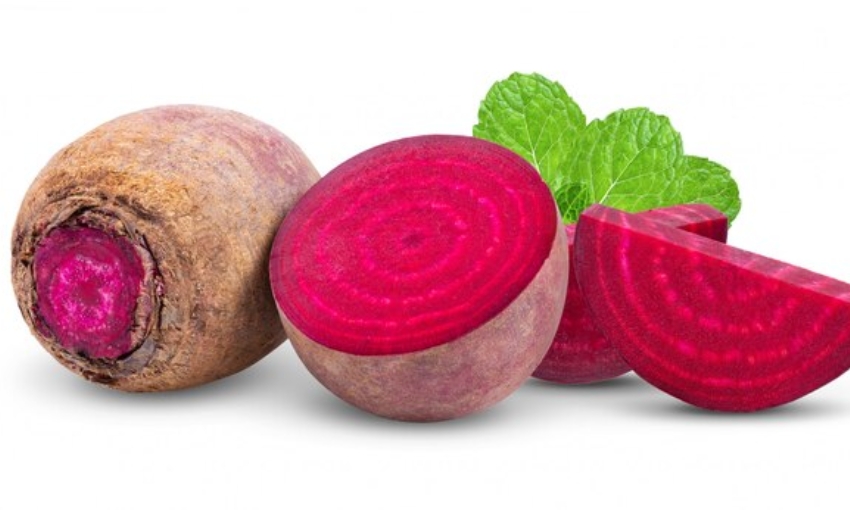
Frequently Asked Questions About Beetroot
1. What is beetroot and how is it different from other root vegetables?
Beetroot is a root vegetable known for its deep red or sometimes golden color and sweet, earthy flavor. Unlike other root vegetables such as carrots or potatoes, beetroot has a unique pigment called betalain, which gives it its vibrant color. It also contains a distinct mix of nutrients, including nitrates, which contribute to its health benefits. Beetroot can be eaten raw, cooked, or pickled, making it versatile in many culinary traditions.
2. How do I choose fresh beetroot at the market?
When selecting beetroot, look for firm, smooth roots without soft spots, wrinkles, or cracks. Smaller beets tend to be more tender and sweeter than large, woody ones. If the beet greens are still attached, they should be fresh, crisp, and vibrant in color, which indicates the beetroot’s freshness. Avoid beets that appear shriveled or have damaged skin, as this may indicate old or spoiled produce.
3. Can you eat the beetroot greens?
Yes, beet greens are completely edible and nutritious. They have a mild, slightly bitter flavor similar to Swiss chard or spinach and can be cooked or eaten raw. You can sauté, steam, or add them to soups and salads. Including beet greens in your diet helps reduce food waste and provides additional vitamins and minerals like vitamins A and K.
4. What are the best ways to cook beetroot?
Beetroot can be prepared in many ways, including boiling, steaming, roasting, and grilling. Roasting is popular because it enhances the beet’s natural sweetness and softens the texture. Boiling or steaming helps retain more nutrients and is quicker but can dull the flavor slightly. You can also eat beetroot raw by grating it into salads or blending it into smoothies for a fresh, crunchy bite.
5. How do you store beetroot to keep it fresh?
Beetroot should be stored in the refrigerator to maintain freshness. It’s best to remove the greens before storing since they draw moisture from the root, causing it to wilt faster. Store the roots in a perforated plastic bag or wrapped loosely in a paper towel inside the fridge’s crisper drawer. Under these conditions, beetroot can stay fresh for up to two weeks.
6. Does cooking beetroot reduce its nutritional value?
Cooking beetroot can cause some loss of water-soluble nutrients like vitamin C, but it can also increase the availability of other beneficial compounds like antioxidants. The cooking method matters; steaming and roasting preserve more nutrients compared to boiling, which may cause nutrients to leach into the water. To maximize nutrition, use cooking methods that retain most of the beetroot’s natural goodness.
7. Why does beetroot sometimes cause pink or red urine?
After eating beetroot, some people notice their urine or stool turning pink or red—a harmless condition called beeturia. This happens because of the pigment betalain, which is sometimes not fully broken down during digestion. Beeturia is not a sign of any health problem and typically varies from person to person depending on factors like stomach acidity and gut bacteria.
8. Can beetroot interact with medications or health conditions?
Beetroot is generally safe for most people, but those taking blood pressure medication should monitor their intake due to beetroot’s natural ability to lower blood pressure. Also, because it’s high in oxalates, people prone to kidney stones may want to consume it in moderation. As always, consulting a healthcare provider before making significant dietary changes is recommended.
9. How can beetroot be incorporated into everyday meals?
Beetroot’s versatility allows it to be added to a variety of dishes. It can be grated raw into salads, blended into smoothies, roasted as a side dish, or pureed into soups. Beetroot juice is popular for its flavor and health benefits. Pickled beetroot is a common addition to sandwiches and salads. Its sweet earthiness complements both savory and sweet recipes, making it easy to incorporate into any meal.
10. Can beetroot be grown at home, and what conditions does it need?
Yes, beetroot is relatively easy to grow at home, either in garden beds or containers. It thrives in cool weather with temperatures between 50-70°F (10-21°C) and needs well-drained, fertile soil with plenty of organic matter. Beets require consistent watering but should not be waterlogged. They are usually sown directly from seed and take about 50-70 days to mature. With basic care, home gardeners can enjoy fresh beets throughout the growing season.

